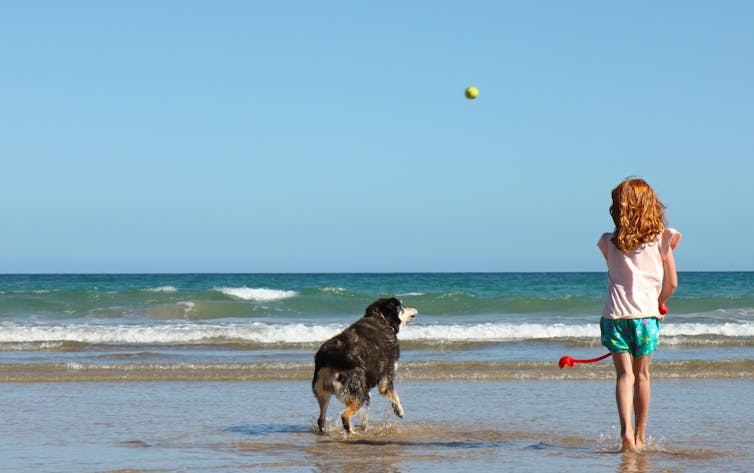How To Keep COVID-19 At Bay During The Summer Holidays — And Help Make Travel Bubbles A Reality In 2021

How to keep COVID-19 at bay during the summer holidays — and help make travel bubbles a reality in 2021
Shutterstock/S
Curtis

Michael Plank, University of Canterbury and Alex James, University of Canterbury
Recent announcements on travel bubbles and quarantine-free travel between New Zealand and Australia from early next year will be welcome news for whānau and friends as well as businesses and the tourism industry.
But as the prime minister made clear, the travel bubble will be contingent on the virus remaining well under control in both countries.
We will need to keep up testing rates on both sides of the Tasman to ensure that, if and when there is another community outbreak of COVID-19, we detect it before it gets too big.
And with the summer holidays about to begin, we will all need to remain vigilant.
What to do on your summer holidays
The virus won’t be taking a summer holiday so, if we want to have one, there are three main things we all need to do:
Scan in wherever you go using the NZ COVID Tracer app and enable the bluetooth tracing function.
Use a mask on public transport or in crowded places.
If you feel unwell, stay home and call Healthline — you can get tested for free no matter where in New Zealand you are.
As the government outlined this week as part of its resurgence planning, people need to be prepared to change holiday plans if there is an outbreak.
This means having a backup plan in case you need to stay longer than expected, or being prepared to return home early. If we all play our part, we will be able to enjoy a well-earned break safely and help make a travel bubble with Australia and the Pacific a reality in 2021.
Risk of re-incursions from managed isolation
If trans-Tasman travellers were exempt from the current requirement to spend 14 days in a managed isolation facility, this would free up capacity for New Zealanders returning from elsewhere.
This sounds like a good thing, but it comes with its own risks. COVID-19 is still raging around the world. There were more than 595,000 new cases and 12,700 deaths from COVID-19 globally on December 15 alone and these grim records are being shattered with heartbreaking regularity.
With these sorts of numbers, the risk of people arriving from the northern hemisphere and carrying the virus is higher than ever. Increasing the number of arrivals from countries with high prevalence will unfortunately increase the risk of COVID-19 leaking out of our managed isolation facilities.
Read
more:
An
Australia–NZ travel bubble needs a unified COVID
contact-tracing app. We're not there
New Zealand has had at least six re-incursions of COVID-19 into the community from managed isolation facilities in the last four months. These include a maintenance worker and nurses working at quarantine facilities, a returnee who caught COVID-19 in managed isolation and the Defence Force cluster.
We have been able to contain most of these without needing to increase alert levels. But if this pattern continues, sooner or later we are likely to experience a larger outbreak. We need to remain vigilant and recognise that any increase in the number of arrivals from high-risk countries will lead to an increase in the risk of community outbreaks.
Travel bubbles might not be forever
If we do get a significant community outbreak in New Zealand or Australia, it’s possible travel restrictions will have to be brought back, at least until the outbreak is controlled. This could mean that travellers are required to self-isolate at home or in a quarantine facility and get tested before or after travelling.
This is similar to the situation in Australia, where each state has its own rules about travellers entering from other states, and these rules change depending on case numbers in each state. Having robust contingency plans and being able to adapt to a rapidly developing situation is key to stopping the virus getting out of control.
This may mean travel plans get disrupted or cancelled from time to time, but this is an unfortunate reality of life in an ongoing global pandemic.
The prospect of a travel bubble with the Cook Islands will also be welcome news for people with whānau in the Cooks and tourists alike. The biggest risk with this bubble is that COVID-19 could be transported from New Zealand to the Cook Islands, where it could cause a devastating outbreak.
New Zealand has a history of exporting infectious diseases to the Pacific, the most recent example being Samoa’s measles epidemic in 2019. We need to make sure we don’t end up repeating this with COVID-19.
Again, continued community testing in New Zealand
will be critical in minimising this risk.![]()
Michael Plank, Professor in Mathematics, University of Canterbury and Alex James, Associate professor, University of Canterbury
This article is republished from The Conversation under a Creative Commons license. Read the original article.


 Gordon Campbell: On Fast Track Powers, Media Woes And The Tiktok Ban
Gordon Campbell: On Fast Track Powers, Media Woes And The Tiktok Ban Binoy Kampmark: Censorship Wars, Elon Musk, Safety Commissioners And Violent Content
Binoy Kampmark: Censorship Wars, Elon Musk, Safety Commissioners And Violent Content Gordon Campbell: On The Public Sector Carnage, And Misogyny As Terrorism
Gordon Campbell: On The Public Sector Carnage, And Misogyny As Terrorism Ramzy Baroud: NATO’s Never-ending War: The 75-Year-Old Bully Is Faltering
Ramzy Baroud: NATO’s Never-ending War: The 75-Year-Old Bully Is Faltering Eugene Doyle: Joining AUKUS Not In NZ’s National Interest
Eugene Doyle: Joining AUKUS Not In NZ’s National Interest Binoy Kampmark: The Australian Defence Formula, Spend! Spend! Spend!
Binoy Kampmark: The Australian Defence Formula, Spend! Spend! Spend!